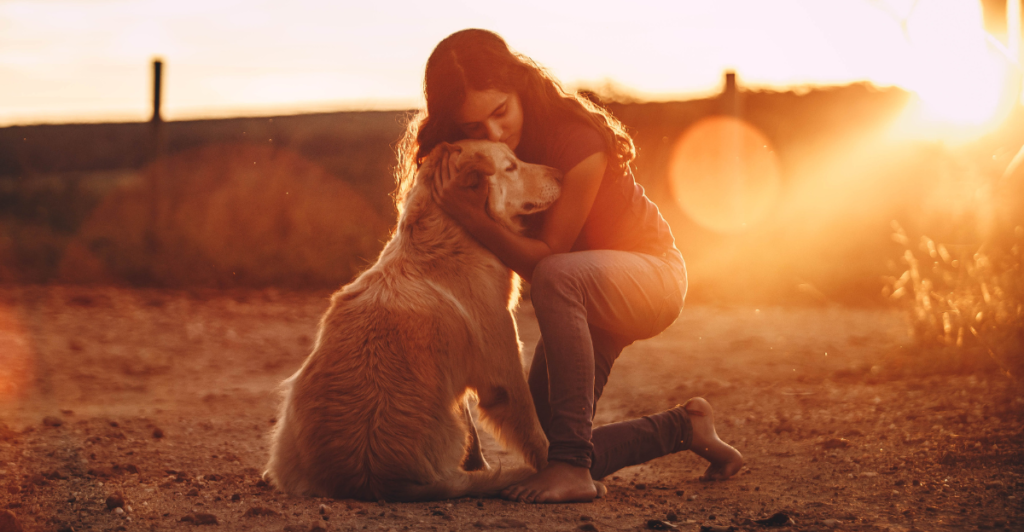
Saying goodbye to a beloved dog is one of the hardest experiences any pet owner can face. But before their final rest, dogs often communicate their love and farewell in ways that can break your heart. From quiet moments of connection to subtle changes in behavior, these gut-wrenching signs can leave a lasting impact. Let’s explore 10 ways dogs say goodbye and the deep emotional bond they share with us until the very end.
1. Prolonged Eye Contact

In their final days, dogs may lock eyes with their owners in a way that feels almost like they’re communicating something profound. This prolonged eye contact is a deeply emotional gesture, challenging the notion that dogs don’t understand the concept of death. It’s as if they’re saying one last heartfelt goodbye, connecting in a way words never could.
2. Seeking Solitude

While some dogs crave companionship, others seek solitude before their passing. This instinct mirrors the behavior of wild animals that wander away from their pack to die alone. It’s a profound, natural act that shows the deep, innate understanding dogs have of their end, far beyond what we might expect.
3. Sudden Bursts of Energy

Just before they pass, some dogs experience a surprising burst of energy known as a “last bloom.” While it might give pet owners false hope of recovery, it’s a poignant reminder of their resilience. This fleeting moment of vitality is bittersweet, showing that even in their final moments, dogs still have the will to fight.
4. Increased Clinginess

Dogs often become especially clingy as their final days approach. They may seek constant companionship, snuggling close to their owners for comfort and reassurance. This behavior highlights the strong emotional bond they share, refusing to let go even when their bodies are weakening.
5. Changes in Vocalization

As death approaches, dogs may begin to vocalize more often or make unsettling sounds. These changes can signal emotional or physical distress. This increased vocalization serves as a heartbreaking reminder that our furry companions are experiencing a tumultuous and often painful time in their lives.
6. Confusion and Disorientation

Dogs nearing the end of their life may exhibit signs of confusion, like forgetting familiar commands or becoming disoriented in their surroundings. This mental fog is a heartbreaking indicator of the changes happening in their minds.
7. Loss of Interest in Activities

One of the most gut-wrenching signs is when dogs lose interest in activities they once loved. Whether it’s chasing a ball or taking walks, their enthusiasm fades. It’s a clear sign their health is declining, leaving owners heartbroken as they realize their dog no longer has the strength or desire to enjoy the things they once did.
8. Repetitive Behaviors

In the last few days, some dogs have developed repetitive behaviors, like pacing or constantly circling. These actions, though familiar, can be a sign of disorientation and confusion. This repetitive behavior is often distressing to owners, offering a unique glimpse into the mental and physical struggle dogs face during their final days.
9. Physical Affection as a Final Gesture

Some dogs’ final moments are filled with an outpouring of physical affection. They may nuzzle, cuddle, or lean on their owners more than ever. This affectionate behavior is a poignant gesture, as if they’re saying one last “thank you” for the love and care they’ve received throughout their lives.
10. Theoretical Awareness of Impending Death

While it’s not scientifically proven, many believe that dogs sense when their time is near. This theory suggests that dogs may react to physical and emotional changes in their bodies, possibly understanding that their journey is coming to an end. It challenges our understanding of canine consciousness, offering a profound perspective on their emotional depth.
Explore more of our trending stories and hit Follow to keep them coming to your feed!

Don’t miss out on more stories like this! Hit the Follow button at the top of this article to stay updated with the latest news. Share your thoughts in the comments—we’d love to hear from you!







